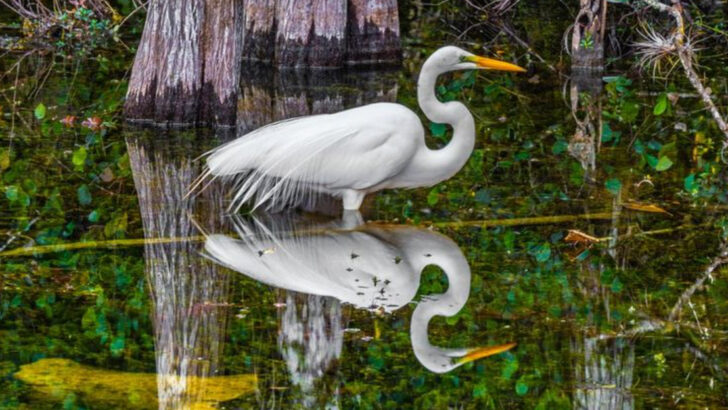Swamps across the United States are teeming with life, offering sanctuary to a diverse array of bird species.
These wetlands provide unique ecosystems that support many beautiful and intriguing birds, each with its own distinct charm.
From the haunting calls of nocturnal hunters to the vibrant plumage of day-dwellers, swamp birds captivate with their adaptability and grace.
This list explores fourteen of the most stunning swamp birds found in U.S. wetlands, showcasing their unique traits, habitats, and the role they play in the delicate balance of swamp ecosystems.
Great Egret
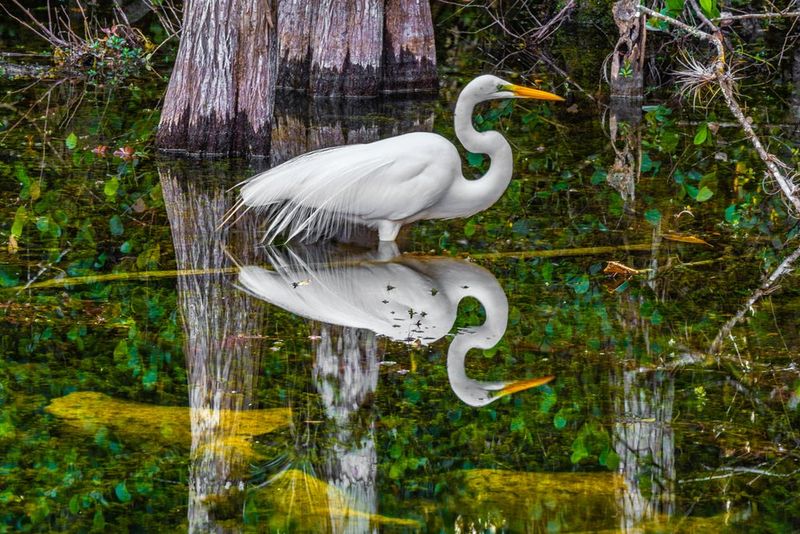
The Great Egret stands as a symbol of elegance in swamps and wetlands. Picture it with its slender, long neck and striking white feathers, gliding silently above the waters. This bird’s patience is unmatched as it stands still, waiting to strike at an unsuspecting fish.
Did you know? The Great Egret was once hunted to near extinction for its beautiful plumes. Today, it’s a conservation success story.
Its haunting silhouette against a dusky swamp sky captivates birdwatchers and nature lovers alike.
American Bittern
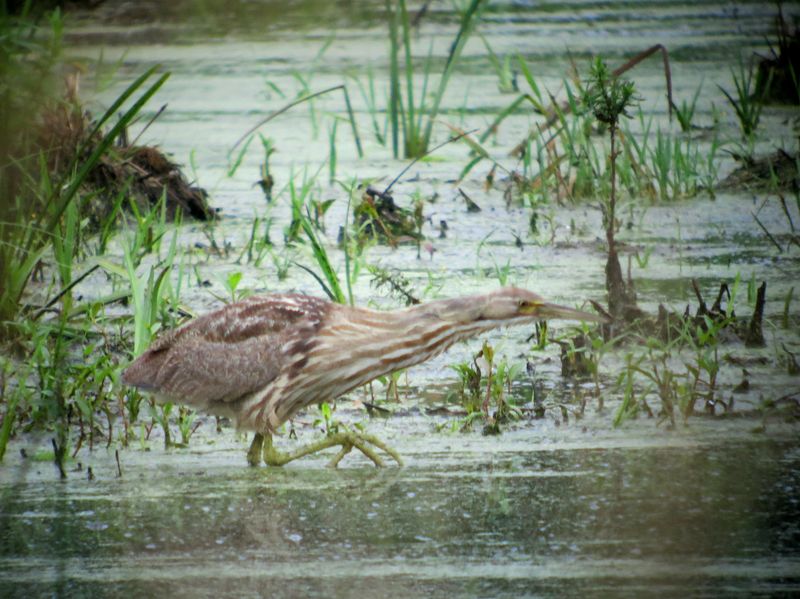
The American Bittern is a master of disguise in the swamps, blending into the reeds with its mottled brown plumage. Often heard before seen, its unique call sounds like a water pump in the distance.
Its stealthy nature allows it to stalk quietly through the marsh, hunting small fish and amphibians.
Though secretive and elusive, the American Bittern plays a crucial role in maintaining the ecological balance of its swamp habitat.
Wood Duck
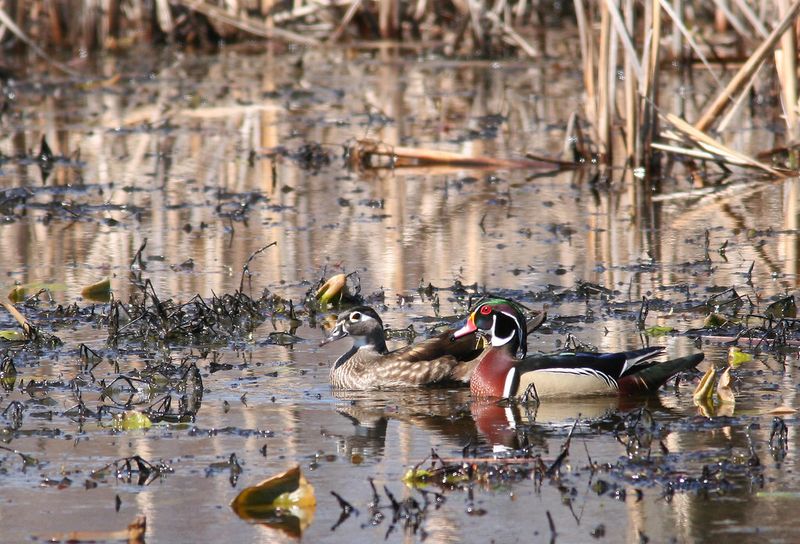
Few swamp birds boast as much color as the Wood Duck. Males are particularly eye-catching with their iridescent green and purple heads, red eyes, and ornate patterns.
Wood Ducks nest in tree cavities, often in forests near swamps, showcasing their adaptive nature.
Their whimsical call adds melody to the swamp’s natural chorus. With populations once declining, conservation efforts have helped the Wood Duck thrive today.
Swamp Sparrow
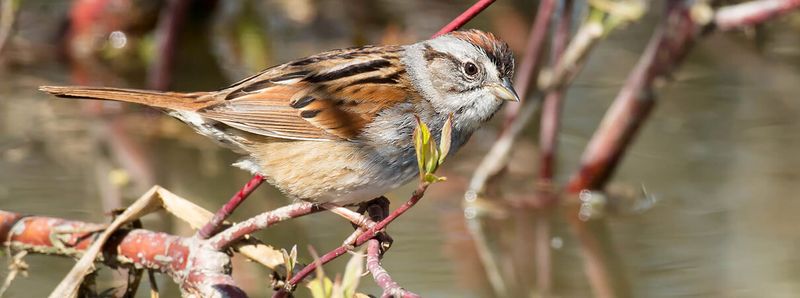
Simple yet charming, the Swamp Sparrow thrives in marshy areas rich with cattails. Its song is a series of melodious trills that echo across the water.
This sparrow’s subtle brown and gray plumage may not be flashy, but it provides perfect camouflage.
Feeding mainly on seeds and insects, the Swamp Sparrow is a vital piece of the swamp’s intricate tapestry, supporting ecological harmony.
Purple Gallinule
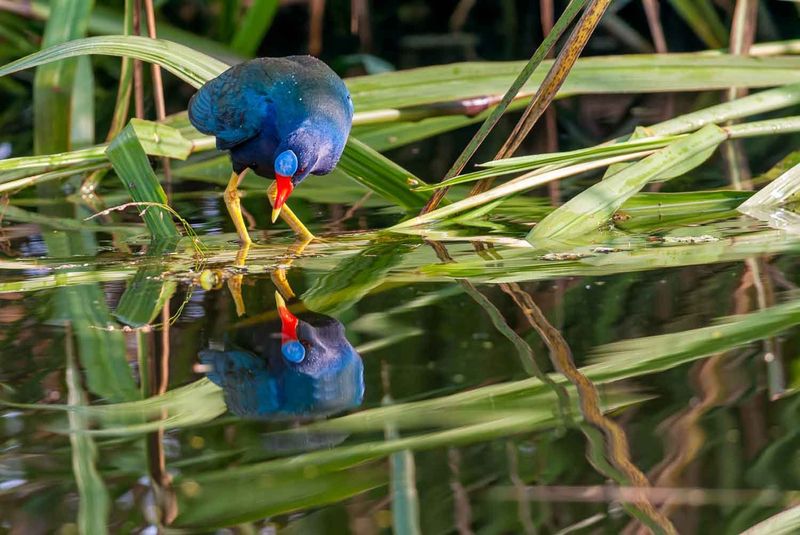
The Purple Gallinule is a vivid splash of color in the murky swamp. Its iridescent feathers shine with shades of purple, turquoise, and green—rivaling the spectrum of a rainbow.
This bird is often seen gracefully walking on floating vegetation, using its long toes to distribute weight.
Famous for its bold hues, the Purple Gallinule is an unforgettable sight, bringing a touch of the exotic to U.S. wetlands.
Anhinga
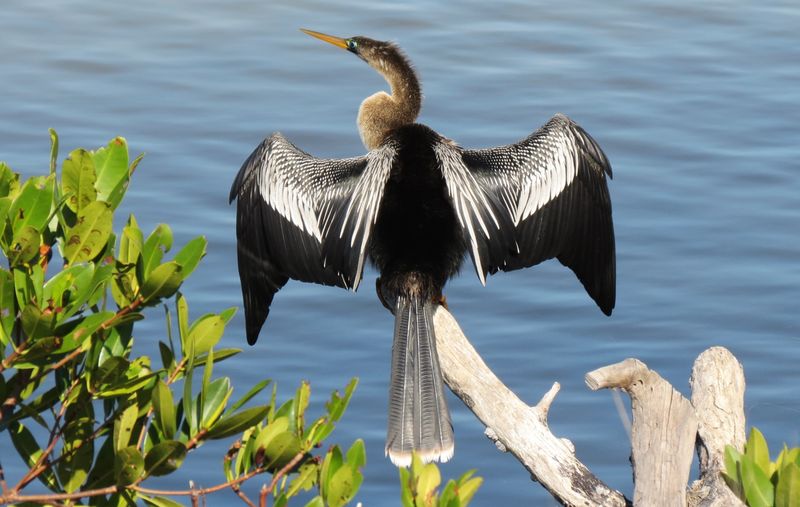
Known as the “snake bird,” the Anhinga cuts a distinctive figure in the swamp. With its long neck and sharp beak, it darts through water like a spear.
After diving, you might see an Anhinga perched with wings spread wide, drying them in the sun.
This iconic pose not only aids in thermoregulation but also adds to the bird’s mysterious allure.
Roseate Spoonbill
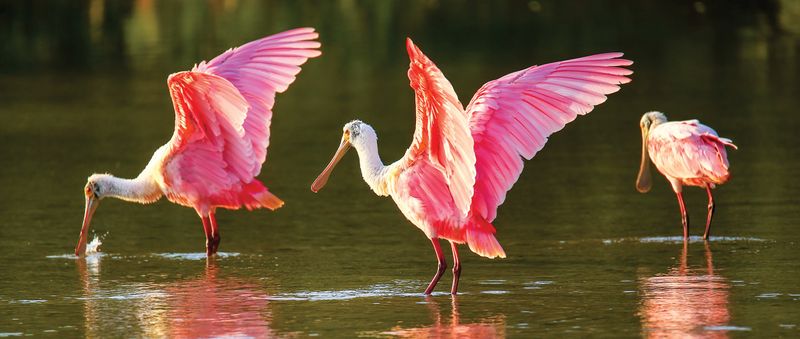
The Roseate Spoonbill is a flamboyant presence in swamps, recognized by its striking pink plumage and spoon-shaped bill. As it forages, it sweeps its bill side to side to catch small fish and invertebrates.
This bird’s unique appearance stems from its diet rich in carotenoid pigments.
A sight to behold, the Roseate Spoonbill is a living example of nature’s artistry.
Yellow-crowned Night Heron
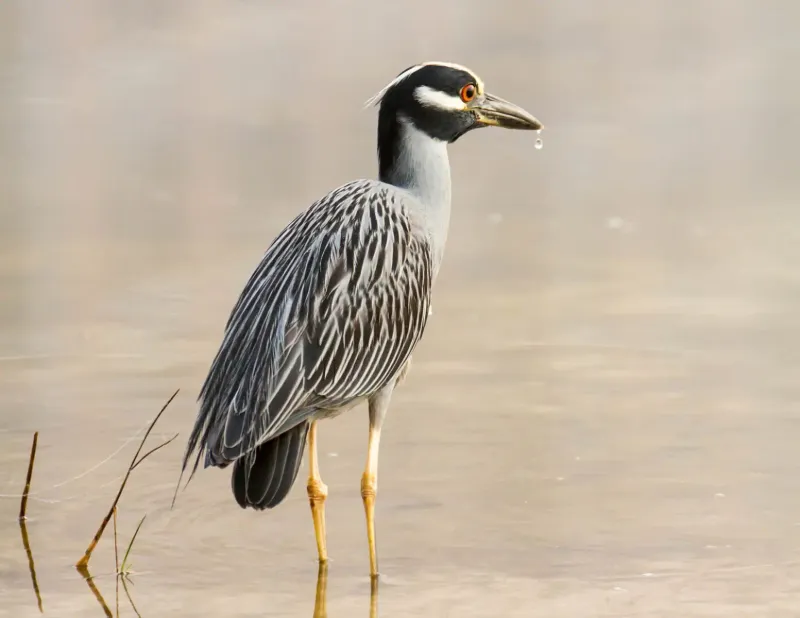
With a keen eye for crustaceans, the Yellow-crowned Night Heron prowls the swamp under the cloak of darkness. Its striking yellow crown and red eyes are unmistakable.
As nocturnal hunters, they are often seen wading through shallow waters in search of crabs and other delicacies.
This bird’s crepuscular lifestyle adds a touch of mystery to the vibrant swamp ecosystem.
Prothonotary Warbler
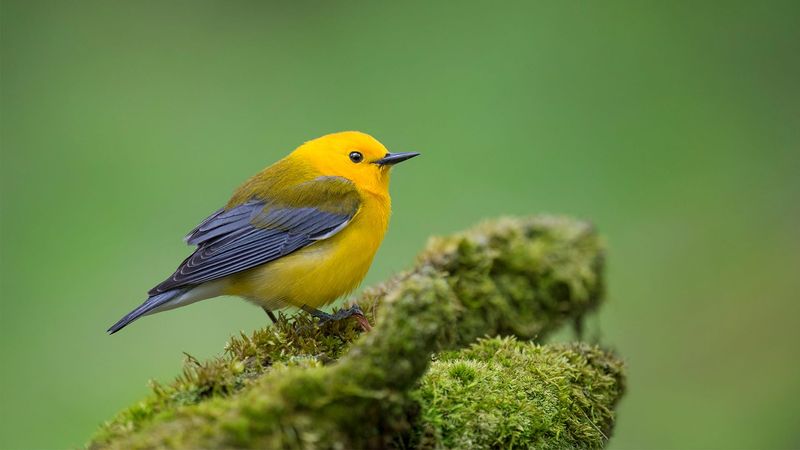
The Prothonotary Warbler is a golden jewel in the swamps, boasting brilliant yellow plumage. Its sweet song resonates through the still waters, announcing spring’s arrival.
This warbler prefers nesting in tree cavities near water, a rarity among its kind.
With dwindling habitat, conservationists strive to protect this vibrant species, ensuring its melody continues to grace U.S. wetlands.
Black-crowned Night Heron
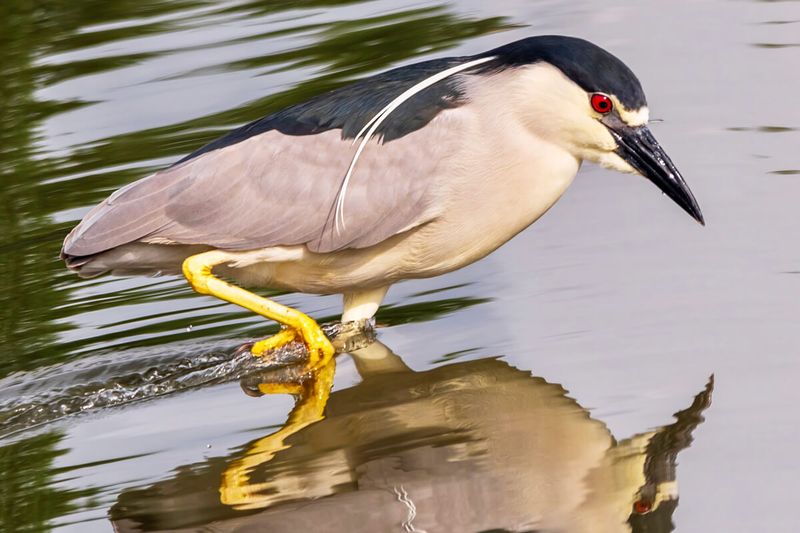
The Black-crowned Night Heron exudes an air of calm in the swamp. With a stocky build and striking red eyes, it waits patiently by the water’s edge for prey.
Active at dusk and dawn, this heron’s stealth is its greatest asset, allowing it to surprise fish and amphibians.
Its adaptability to varied environments makes it a resilient resident of U.S. swamps.
Limpkin
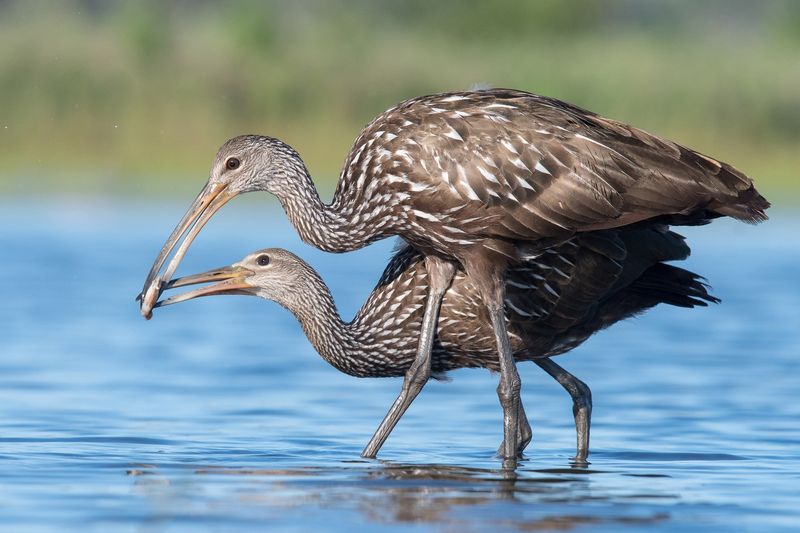
The Limpkin is known for its haunting call that echoes eerily across the swamp. With its long bill, it expertly extracts snails from their shells, particularly favoring apple snails.
Its brown, speckled feathers provide perfect camouflage among the reeds.
Though it resembles a heron, the Limpkin is a unique species, adding an enigmatic presence to swampy landscapes.
Green Heron
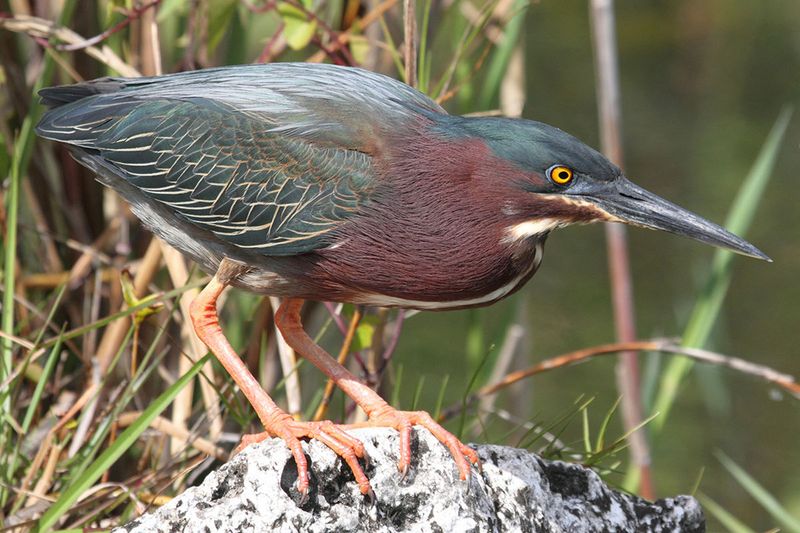
The Green Heron is a clever fisherman of the swamp. Known for using tools, it drops objects on the water’s surface to lure fish.
Its dark greenish-blue plumage blends seamlessly into the background, providing stealth as it hunts.
These resourceful birds are a testament to the ingenuity of nature’s design, thriving in wetlands across the country.
Cattle Egret
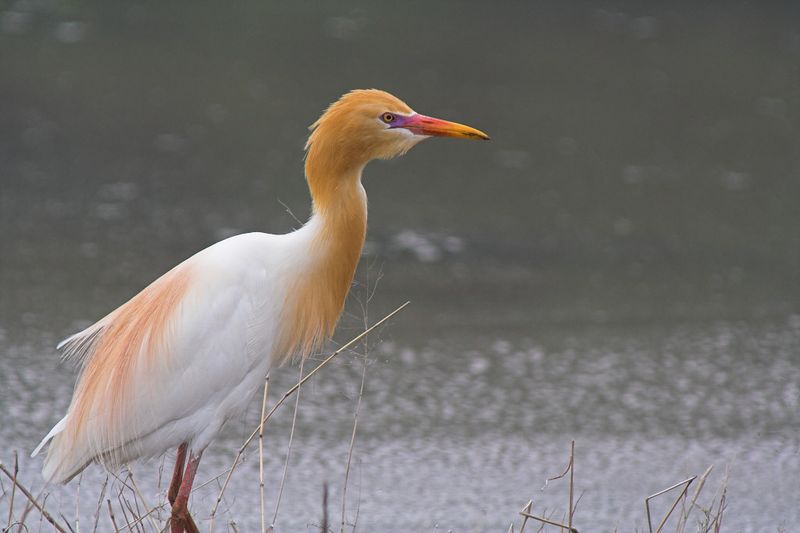
The Cattle Egret is an opportunist and a traveler, often found in swamps and fields alike. Its white plumage is a common sight, especially where livestock graze.
By following herds, it feasts on insects stirred by the animals, a symbiotic relationship benefiting both.
This adaptability has allowed the Cattle Egret to flourish across continents, including North America’s swamplands.
King Rail
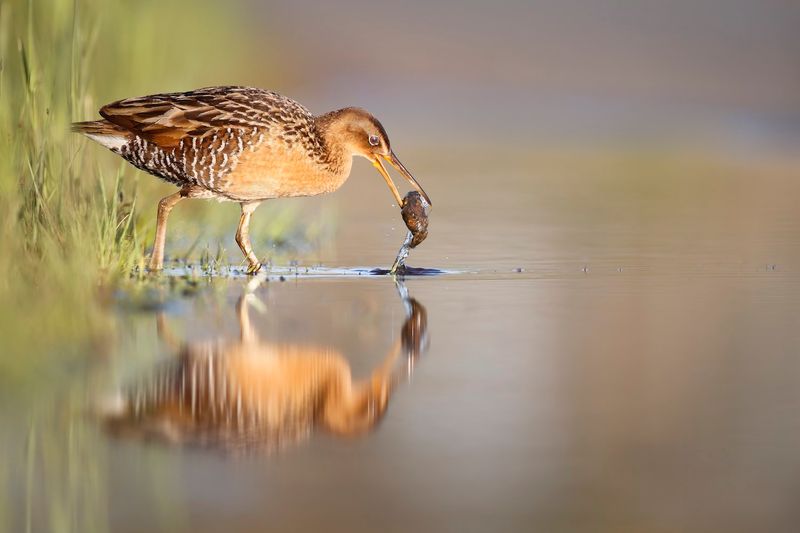
King Rail, the largest rail in North America, is a secretive bird of the swamps. Its brown and black plumage makes it nearly invisible as it weaves through dense marshes.
Feeding on crustaceans and insects, it maintains the swamp’s delicate food web.
Despite its elusive nature, the King Rail is a crucial player in the ecological balance of wetland habitats.

